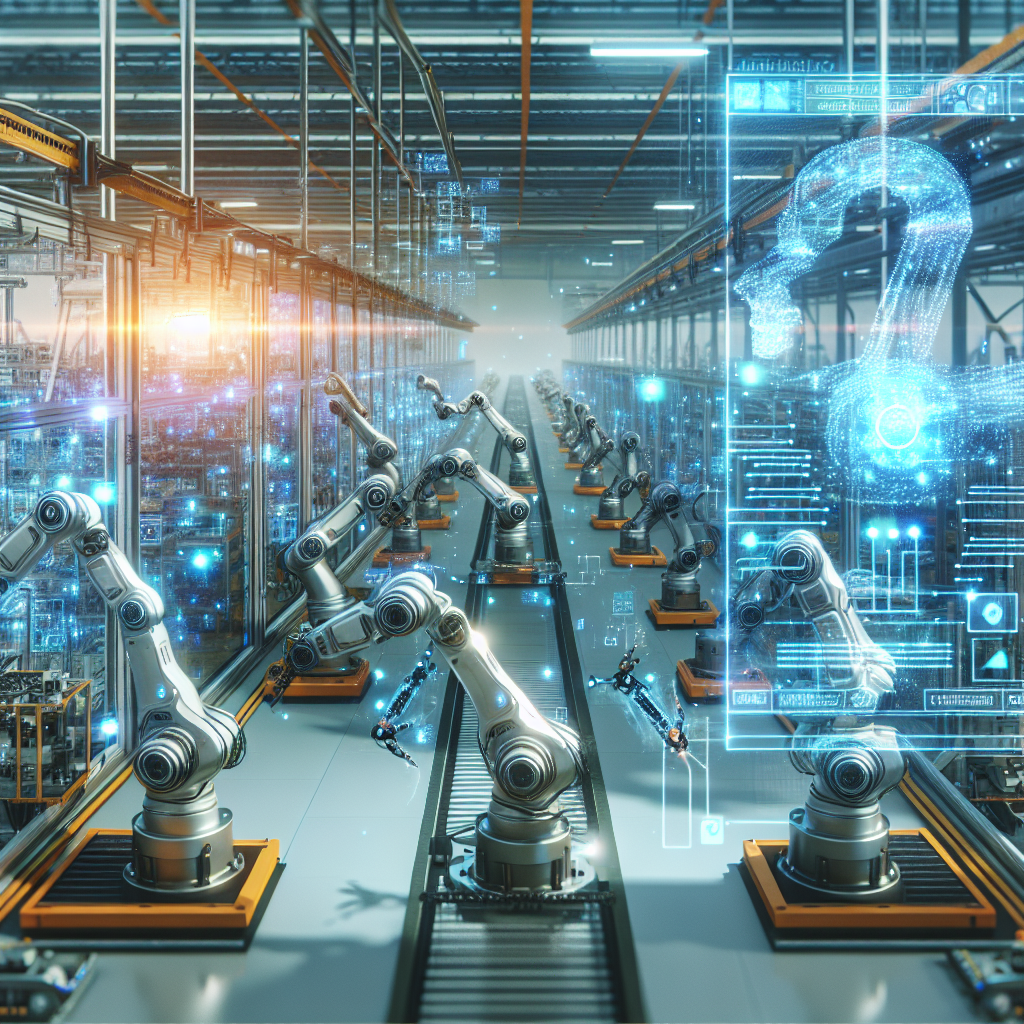The Integration of AI and Robotics in Manufacturing
In recent years, there has been a significant rise in the use of artificial intelligence (AI) and robotics in manufacturing. These advanced technologies have revolutionized the way products are made, increasing efficiency, accuracy, and productivity in the process. This integration of AI and robotics has led to the creation of smart factories that are transforming the manufacturing industry.
AI and robotics have been used in manufacturing for decades, but recent advancements in these technologies have made them more powerful and versatile than ever before. AI refers to the simulation of human intelligence in machines that are programmed to think and learn like humans. Robotics, on the other hand, involves the design and creation of robots that can perform tasks autonomously.
The integration of AI and robotics in manufacturing has several benefits, including increased efficiency, improved quality, reduced costs, and enhanced safety. By using AI and robotics, manufacturers can automate repetitive tasks, optimize production processes, and make real-time decisions based on data analysis. This results in faster production times, higher product quality, and lower operational costs.
One of the key areas where AI and robotics are making an impact in manufacturing is in the development of smart factories. These factories use AI and robotics to connect machines, sensors, and other devices to the internet, allowing them to communicate and collaborate with each other in real-time. This enables manufacturers to monitor and control production processes remotely, identify and resolve issues quickly, and make informed decisions based on data analytics.
Another area where AI and robotics are being integrated into manufacturing is in the development of autonomous robots. These robots are equipped with AI algorithms that allow them to navigate and operate in complex environments without human intervention. They can perform a wide range of tasks, such as assembly, welding, painting, and quality inspection, with high precision and efficiency.
AI and robotics are also being used in manufacturing to improve predictive maintenance. By analyzing data from sensors and machines, AI algorithms can predict when equipment is likely to fail and schedule maintenance before problems occur. This helps manufacturers avoid costly downtime and extend the lifespan of their equipment.
Furthermore, AI and robotics are being used to enhance human-robot collaboration in manufacturing. Collaborative robots, or cobots, are designed to work alongside human workers in a shared workspace. These robots are equipped with sensors and AI algorithms that allow them to adapt to their environment and interact safely with humans. They can assist workers with tasks that are repetitive, dangerous, or physically demanding, improving productivity and reducing the risk of injuries.
Despite the many benefits of integrating AI and robotics in manufacturing, there are also challenges that need to be addressed. One of the main challenges is the high cost of implementing these technologies, including the upfront investment in hardware and software, as well as the ongoing maintenance and training costs. Manufacturers also need to consider the ethical and social implications of using AI and robotics in their operations, such as job displacement and the impact on worker safety.
In conclusion, the integration of AI and robotics in manufacturing is revolutionizing the industry and paving the way for the future of manufacturing. By leveraging the power of AI and robotics, manufacturers can increase efficiency, improve quality, reduce costs, and enhance safety in their operations. As technology continues to advance, we can expect to see even more innovative applications of AI and robotics in manufacturing, leading to smarter, more agile, and more competitive factories.
FAQs:
Q: What are some examples of AI and robotics applications in manufacturing?
A: Some examples of AI and robotics applications in manufacturing include autonomous robots for assembly, welding, and quality inspection, collaborative robots for human-robot collaboration, predictive maintenance for equipment monitoring, and smart factories for real-time production control.
Q: How can AI and robotics improve efficiency in manufacturing?
A: AI and robotics can improve efficiency in manufacturing by automating repetitive tasks, optimizing production processes, and making real-time decisions based on data analysis. This results in faster production times, higher product quality, and lower operational costs.
Q: What are the challenges of integrating AI and robotics in manufacturing?
A: Some of the challenges of integrating AI and robotics in manufacturing include the high cost of implementation, the ethical and social implications of using these technologies, and the need for ongoing maintenance and training. Manufacturers also need to consider how to address job displacement and worker safety issues.
Q: What are the benefits of using AI and robotics in manufacturing?
A: Some of the benefits of using AI and robotics in manufacturing include increased efficiency, improved quality, reduced costs, and enhanced safety. By leveraging these technologies, manufacturers can automate tasks, optimize processes, and make data-driven decisions that lead to better outcomes for their operations.

